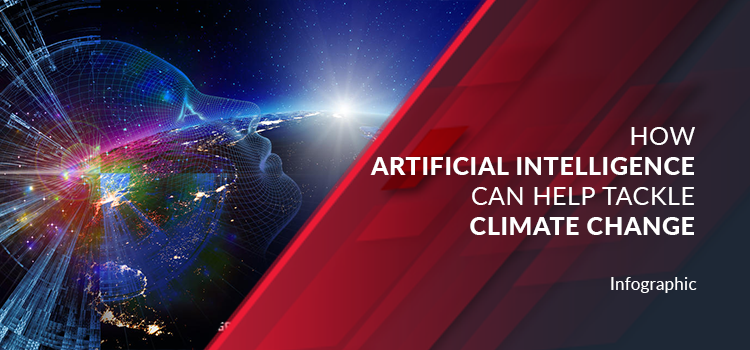Here we describe how machine learning can be a powerful tool in reducing greenhouse gas emissions and helping society adapt to a changing climate. From the smart grids to disaster management, we are able to identify high impact problems where existing gaps can be filled by machine learning, in collaboration with other fields. In 2018 an international report on climate change estimated that the world will face catastrophic consequences unless global greenhouse gas emissions are eliminated within thirty years. Yet year after year, these emissions rise. Despite the growth of movements applying ML and AI to problems of societal and global good, there remains the need for a concerted effort to identify how these tools may best be applied to tackle climate change. Many ML practitioners wish to act but are uncertain how. On the other side, many fields have begun actively seeking input from the ML community.
This article speaks about how AI can help reverse climate change.
Artificial Intelligence has taken over the global industries in a big way and this is just the beginning. The capabilities of AI have only been introduced in the various industries that it has been utilized in. Researchers have been trying to find a way to tackle climate issues by using AI to help assist in finding new ways and materials that can help reduce carbon emissions as well as find an alternative method to replace plastics in a more financially viable way.
What man can do in a few years by testing and trying new methods of the financial feasibility of new materials to help constrict pollution levels in the world AI can do the same in a few seconds hence saving precious time, tangible as well as non-tangible resources.
Better climate predictions:
Climate informatics covers a range of topics: from improving prediction of extreme events such as hurricanes, palaeoclimatology, like reconstructing past climate conditions using data collected from things like ice cores, climate downscaling or using large-scale models to predict weather on a hyper-local level, and the socio-economic impacts of weather and climate.
Better predictions can help officials make informed climate policy, allow governments to prepare for change, and potentially uncover areas that could reverse some effects of climate change.
Artificial intelligence (AI) technology can help us fight climate change – but it also comes at a cost to the planet. To truly benefit from the technology’s climate solutions, we also need a better understanding of AI’s growing carbon footprint, say, researchers.
AI’s relevance as a climate change fighting tool comes at a time when there are increasing ethical concerns linked largely to a data-hungry form of the technology called machine learning, where computer systems analyse patterns in existing data to make predictions and decisions. Machine learning applications have raised concerns about creeping public surveillance, intentional misuse, privacy, transparency and data bias that can lead to discrimination and inequality. AI can also unlock new insights from the massive amounts of complex climate simulations generated by the field of climate modelling, which has come a long way since the first system was created at Princeton in the 1960s. Of the dozens of models that have since come into existence, all represent atmosphere, oceans, land, cryosphere, or ice. But, even with agreement on basic scientific assumptions, Claire Monteleoni, a computer science professor at the University of Colorado, Boulder and a co-founder of climate informatics, points out that while the models generally agree in the short term, differences emerge when it comes to long-term forecasts.
Examples of predictions:
Arctic sea ice is shrinking, and glaciers are retreating worldwide. Seas could rise three feet by 2100 – or maybe more. The Arctic has warmed more than the rest of the planet and its ice cover has thinned and shrunk. That loss speeds the warming, as the sunlight is absorbed by Dark Ocean instead of reflected into space by ice.
Worldwide, the number of climate-related disasters has more than tripled since 1980.
The extraordinary heatwave that killed some 70,000 people in Europe in 2003 should have been once in 500 years event at the current level of global warming, it has become once in 40 years event, according to a study published in 2019. In Paris alone, that analysis found, climate change caused by 506 excess deaths in 2003. If it continues unchecked, another recent study said by late this century people living along the Persian Gulf may face many days so hot that it will be unsafe to go outside.
To make sure AI is used to help, and not hinder, our society, Prof. Renda says it’s time to merge the two big debates of today. ‘One is on digital technology and the other one is on sustainable development and in particular the environment. If we use the former to save the latter, I think we will have made the best possible use of the resources that we have,’ he said. Otherwise, we’re just wasting time.’











